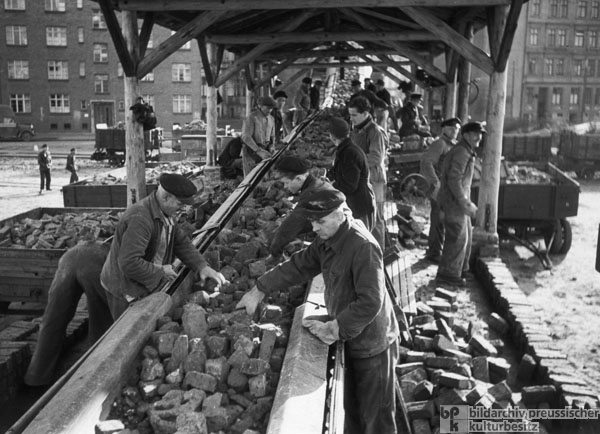













INTRODUCTION | DOCUMENTS | IMAGES | MAPS | EDITOR
|
During World War II, the devastating aerial bombardment of Hamburg's harbor, inner city, and industrial facilities – especially the series of attacks in the summer of 1943 – claimed tens of thousands of lives. About 50 percent of the city's housing stock was completely destroyed in the war, and only about 25 percent remained undamaged. After the war, one of Hamburg's main challenges was to remove about 43 million cubic meters of rubble; at first, city authorities estimated that twenty years would be needed to clear everything. The first rubble-removal operations in the early stage of the occupation were carried out manually; over time, however, the growing use of machines accelerated the pace of work. In reconditioning plants – as we see here – usable bricks were sorted and then reused in construction. Photo by Germin (Gerd Mingram).
© Bildarchiv Preußischer Kulturbesitz / Germin |
 print version
print version return to image list
return to image list previous image
previous image
